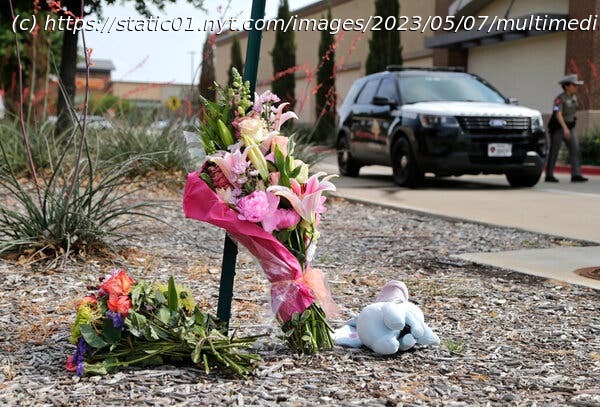Graphic images of the attack went viral on the platform, which has made cuts to its moderation team. Some users said the images exposed the realities of gun violence.
Pat Holloway has seen her share of destruction during a 30-year career as a photojournalist: the 1993 standoff in Waco, Texas; the 1995 bombing of a federal building in Oklahoma City by Timothy McVeigh; and the 2011 tornado that struck Joplin, Mo.
But this weekend, she said in an interview, she had had enough. When graphic images began circulating on Twitter showing bloody victims of a mass shooting at a mall in Texas that left at least nine people, including the gunman, dead, she tweeted at Elon Musk, Twitter’s owner, demanding that he do something.
“This family does not deserve to see the dead relatives spread across Twitter for everybody to see,” Ms. Holloway, 64, said in the interview on Sunday.
Ms. Holloway was one of many Twitter users who criticized the social network for allowing the grisly images — including of a blood-spattered child — to spread virally across the platform after the shooting on Saturday. Though gruesome images have become common on social media, where a cellphone camera and an internet connection make everyone a publisher, the unusually graphic nature of the images drew sustained outcry from users. And they threw a harsh spotlight on Twitter’s content moderation practices, which have been curtailed since Mr. Musk acquired the company last year.
Like other social media companies, Twitter has once again found itself in a position akin to that of traditional newspaper editors, who wrestle with difficult decisions about how much to show their audiences. Though newspapers and magazines generally spare their readers from truly graphic images, they have made some exceptions, as Jet magazine did in 1955 when it published open-casket images of Emmett Till, a 14-year-old Black boy who was beaten to death in Mississippi, to illustrate the horrors of the Jim Crow-era South.
Unlike newspaper and magazine publishers, however, tech companies like Twitter must enforce their decisions on a huge scale, policing millions of users with a combination of automated systems and human content moderators.






